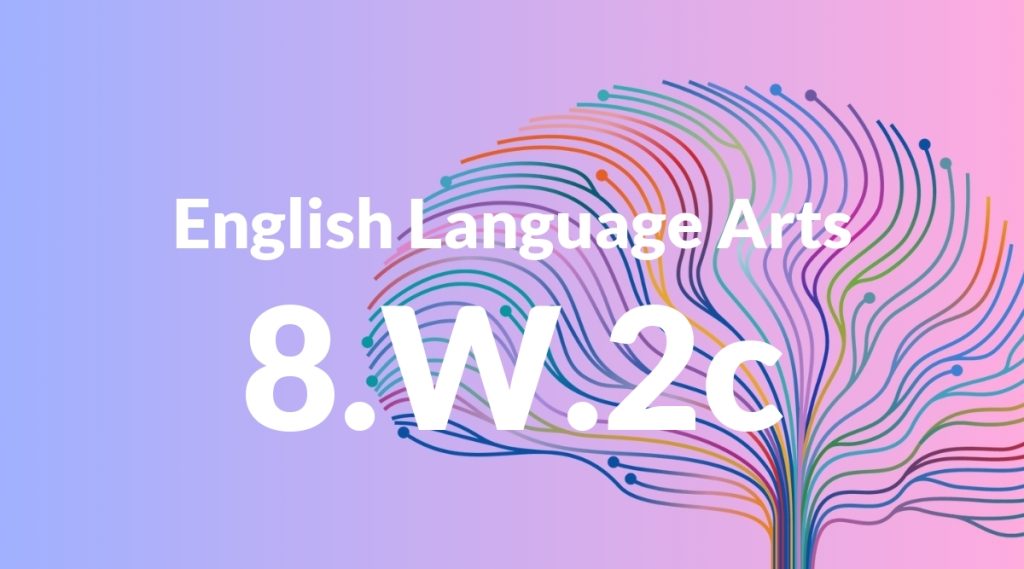Standard: 8.W.2c – Use appropriate and varied transitions to create cohesion and clarify the relationships among ideas and concepts.
Grade level: Grade 8
Subject: English Language Arts
Domain: Writing
Teacher Overview
This standard emphasizes the importance of using varied transitions to create cohesion and clarify relationships among ideas in writing. Mastery of this skill is crucial for students to develop clear, logical, and engaging texts, which is a fundamental aspect of effective communication. Students should have a basic understanding of sentence structure, paragraph organization, and the role of transitions in writing. They should also be familiar with different types of transitions and their purposes.
Mastering this standard will enable students to write more complex and nuanced texts. They will be able to create sophisticated arguments, develop intricate narratives, and produce professional-quality writing.
Common Misconception 1
A common misconception is that transitions are only needed at the beginning of paragraphs. This is incorrect because transitions are essential throughout the text to connect ideas and maintain a smooth flow.
Intervention 1
To address this misconception, provide students with exercises that require them to use transitions within paragraphs. Highlight the importance of internal transitions in maintaining coherence.
Common Misconception 2
Another misconception is that all transitions serve the same purpose. This is not true as different transitions (e.g., additive, adversative, causal, sequential) serve unique functions in writing.
Intervention 2
Use graphic organizers and writing exercises to help students categorize and practice using different types of transitions. Provide clear examples and contexts for each type.
Prerequisite Knowledge
Students should have a basic understanding of sentence structure, paragraph organization, and the role of transitions in writing. They should also be familiar with different types of transitions and their purposes.
Subsequent Knowledge
After mastering the use of transitions, students will be able to write more complex and nuanced texts. They will be able to create sophisticated arguments, develop intricate narratives, and produce professional-quality writing.
Instructional Activities
- Transition matching exercises
- Paragraph rewriting tasks
- Peer review sessions focusing on transitions
- Writing prompts that emphasize the use of varied transitions
- Analyzing professional writing for transition use




